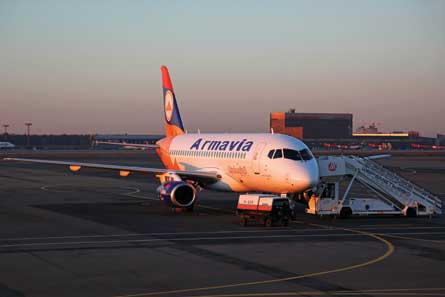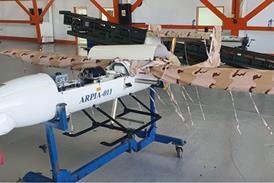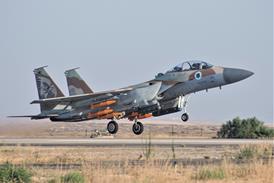Russia's United Aircraft is on the verge of deciding whether to launch a business jet version of the Sukhoi Superjet 100 regional airliner.
"In the nearest future we will take a decision on the creation of the business jet version on the platform of the SJ100," says UAC chairman Mikhail Pogosyan, noting that the new variant would fall "somewhere in between traditional business jets such as the Gulfstream and the Boeing Business Jet".
The new version is being considered as a result of approaches from potential customers. Pogosyan says: "We had people coming to us saying 'Why don't you make a business jet?'"
He is reluctant to give many details at this stage but says that additional fuel tanks in the cargo hold would give a range of almost 8,000km (4,300nm), more than double the Superjet's standard range of 3,000km.
 |
|---|
© SuperJet InternationalThe SuperJet entered service with launch customer Armavia in April 2011 |
Pogosyan is confident that the combination of cabin volume and low internal noise will mean the aircraft suits its new role.
The possibility of a business jet version comes just three months after the airliner entered revenue service.
Initial feedback from Armenian launch customer Armavia has been "very positive", says Pogosyan. Speaking in Moscow at a pre-Paris air show interview, he says no significant problems were reported in the first three weeks of operation: "Pilots, passengers and owners are extremely happy."
The first SJ100 for Russian flag-carrier Aeroflot was due to be in the company's hands by the end of May, but while it would be delivered ready for immediate service, the airline had to complete some internal procedures before its initial passenger-carrying flights, says Pogosyan. Aeroflot has indicated that it will acquire 40 Superjets by 2016.
The Superjet will fly at Le Bourget and Pogosyan hints heavily that there will be new orders to announce: "We have a number of contracts that will be signed in the nearest future with southeast Asia operators."
"I believe that this year we are going to see contracts with European customers, not only eastern European but western European carriers," he adds.
While sales inside Russia are pretty much assured, breaking into non-traditional markets is vital to demonstrate that the Superjet can hold its own with competitors such as Embraer and Bombardier.
With this in mind, January's firm order for 15 Superjets, plus five options, from Interjet of Mexico was extremely important.
"For us, it was a big milestone. I strongly believe that the aircraft is the best offering in this [market] segment. We've brought into this regional segment new technologies that were previously only on mainline aircraft, such as fly-by-wire," says Pogosyan.
Work with European airworthiness authority EASA is ongoing and should be largely finished by the end of this year, he adds. The Superjet has a head start in gaining EASA certification as many of its major components are made by western manufacturers and its SaM146 powerplants already have EASA approval.
At the same time, work on expanding the aircraft's operational envelope is continuing, with Category 3A landing performance under testing.
Source: Flight Daily News























